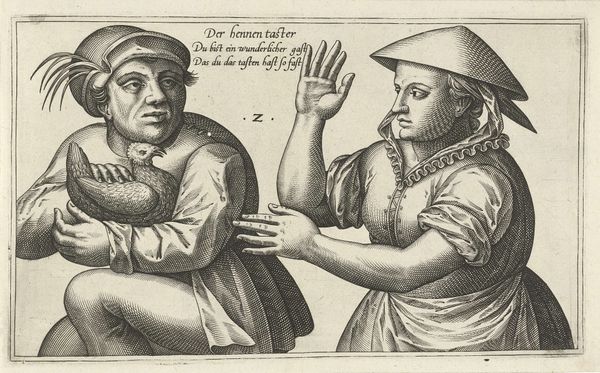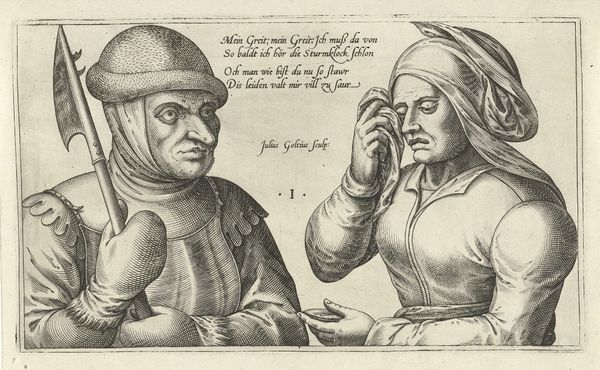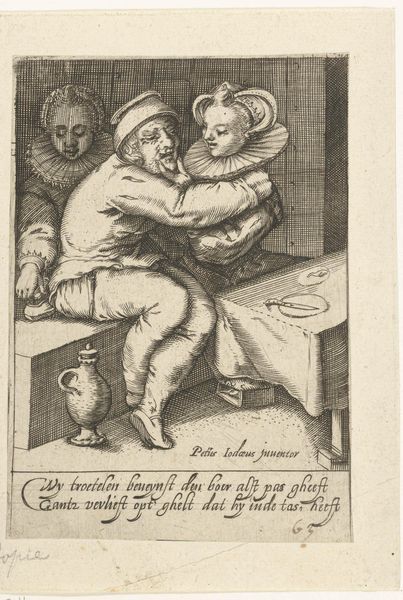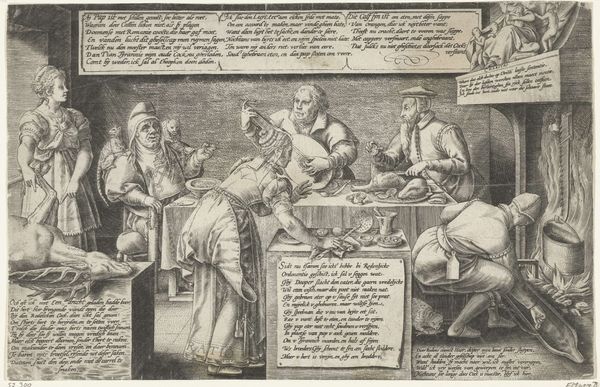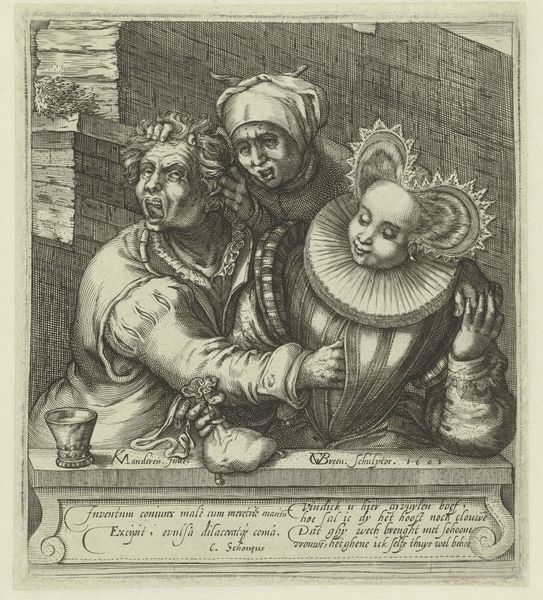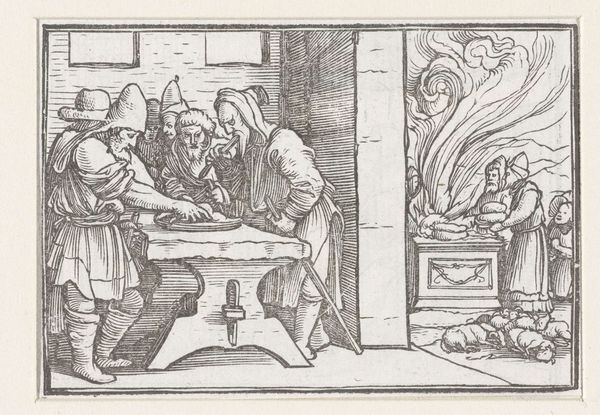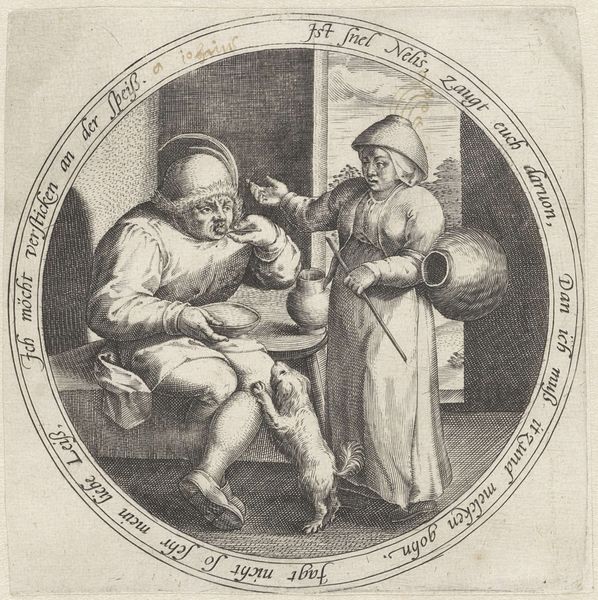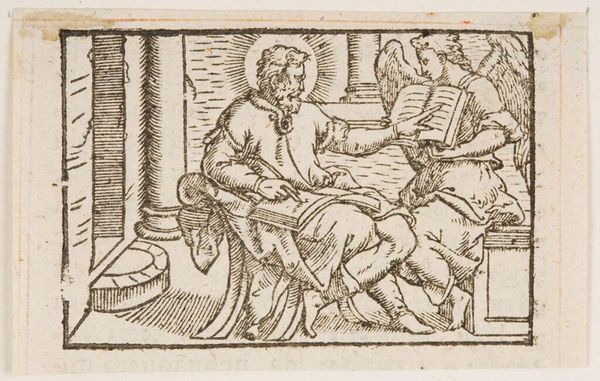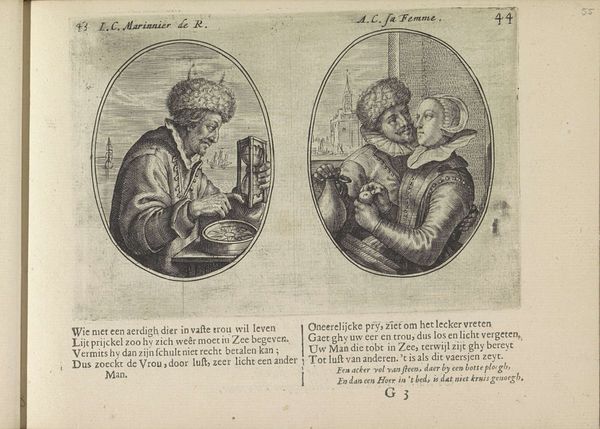
print, engraving
#
portrait
# print
#
pencil sketch
#
figuration
#
pen-ink sketch
#
line
#
sketchbook drawing
#
portrait drawing
#
genre-painting
#
northern-renaissance
#
engraving
#
realism
Dimensions: width 275 mm, height 162 mm
Copyright: Rijks Museum: Open Domain
Curator: Looking at "Spinnende vrouw met haar echtgenoot", or "Spinning Woman with her Husband," a print made by Julius Goltzius circa 1560-1595 and held in the collection of the Rijksmuseum, one immediately observes the strong lines typical of Northern Renaissance engraving. The work depicts a woman spinning and a man with a vessel of some kind. What is your initial read of this print? Editor: My immediate reaction is a sense of domestic tension. The composition splits the image almost perfectly down the middle, visually separating the two figures, which gives a stark impression despite the rather mundane subject matter. The man's scowl especially seems significant. Curator: I see what you mean. If we delve into the material circumstances of the time, domestic production played a pivotal role in the Dutch economy. Textile production, especially spinning, was a significant source of income for many families. Editor: Right, and you can see the direct labor involved. The print focuses attention on the very implements of production. The contrast between the precisely rendered tools and the roughly drawn expressions adds a fascinating dimension. It’s less a romantic vision of labor, more a representation of its often-unpleasant realities. Note how the line work varies to describe both form and the relative value the artist ascribes to each component in the visual field. Curator: Indeed, Goltzius depicts not just the labor but its impact on individuals. His focus is very attuned to the daily lives of ordinary people; and, in that respect, moves past many previous assumptions on traditional artistic priorities by acknowledging the significance of everyday struggles through carefully chosen material signifiers, such as those objects, as a vehicle for emotional delivery. Editor: The positioning and expression certainly suggest strain or possibly silent communication. I am more drawn to its technical qualities—the rendering of light, shadow, and textures with remarkable detail despite the apparent lack of color in this particular print form, creating a world defined solely by the stark interplay between light and dark that seems perfectly aligned with an underlying sombre theme. Curator: I can't deny the visual power. But for me, the heart of the image exists in the social relations implied, hinting at an imbalance of power between man and wife or possibly at some tension brought on by economic pressure that impacts directly how this material production of labor is seen. Editor: It’s interesting how focusing on different aspects—materiality versus formalism—reveals layers within the image, demonstrating it is rich for interpretation on various levels. Curator: I concur. Ultimately, Goltzius has made a memorable statement on life within his timeframe via this domestic rendering, providing a timeless exploration that welcomes further reflection on artistic, economic, and societal levels, indeed.
Comments
No comments
Be the first to comment and join the conversation on the ultimate creative platform.
